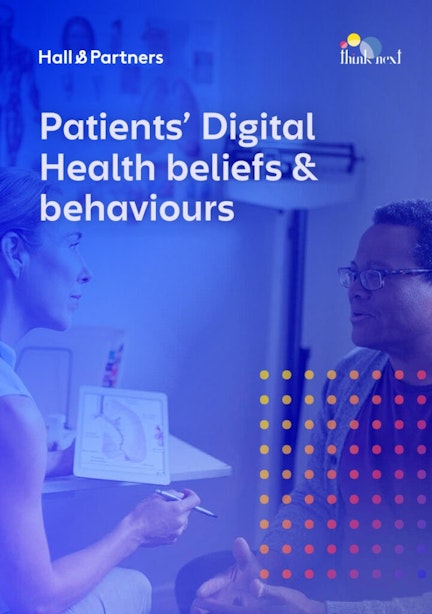Press

As Generation Z starts to engage with healthcare services, global challenges in accessing doctors and nurses mean that TikTok and Facebook are becoming major players in their experience of healthcare.
Patient Trendscoping: What You Need To Know About Patients of the Future reveals that the always-available Dr TikTok and Nurse Facebook have become primary providers of information for millions of younger patients, who feel that the existing services fail to support them or even dismiss their symptoms.
In the UK, for example, more than 6 million people are turning to a new generation of influencers on platforms such as Instagram, Facebook and TikTok for help with chronic conditions or for more general healthcare information.
Globally 33% of GenZ and 26% of millennials (compared to 5% of Baby Boomers) will use social media to discuss illness. For GenZ, the top platform is TikTok followed by Instagram and Twitter, although older groups will turn to Facebook first.
And the picture is even starker when it comes to patients of all ages with chronic conditions, with 30% globally not seeing their doctor as a regular information source, rising to 63% for inflammatory bowel disease (IBD) sufferers, with 29% of IBD patients using specific groups on social media and 28% relying on online influencers.
Even when they do visit a doctor, 29% of US GenZ and 32% of Millennials are taking charge and asking to be prescribed based on information they have read on a website, and 20% of GenZ are asking to be given a treatment they had heard about from another patient or influencer. This compares to just 7% and 4% respectively for Baby Boomers.
The findings are based on detailed online surveys taken by 10,500 over-18s in the US, China, UK, Germany and Japan and was conducted between July and September 2022 by Hall & Partners in partnership with ThinkNext.
One key reason why younger patients, in particular, are seeking out alternative sources of healthcare information is that across all generations and in all countries there is widespread dissatisfaction with the current state of the health service.
Half of patients feel frustrated that they do not get enough time with doctors (46% globally, 49% in the UK and 42% in the US); that they sometimes lack empathy (43% globally, 41% in the UK and 40% in the US); are not answering their questions clearly (15% globally, 12% in the UK and 11% in the US said they struggled to understand what a medical professional said due to complicated medical language, particularly when it comes to complex diseases such as IBD).
Discrimination and dismissal by healthcare providers
Another cause in the breakdown of the patient-doctor relationship is discrimination, 16% of people in the US have felt discriminated against by a healthcare professional (14% globally) because of their age, gender, ethnicity, sexual orientation or weight. The figure is even higher among Black/African Americans, where 26% have felt discriminated against by a healthcare provider. The causes of discrimination can be varied however, with a third attributing it to their ethnicity: other common causes of discrimination include age (31%), weight (23%) and health choices (23%).
Ultimately, one in four people in the UK and US (26% in UK and 22% in the US) feel they have been dismissed and not taking seriously by a medical professional when discussing their symptoms. This is even higher for people with some harder to diagnose conditions such as fibromyalgia (51% globally).
Seeking more information from social media can be a double-edged sword for patients and healthcare systems. While a more informed patient can help doctors and nurses answer concerns and queries accurately, not everything on social media is going to be accurate. Patients demanding inappropriate or potentially risky treatments, whether they have heard about them on social media, the internet or from another patient, can be hard to manage.
Ultimately, the solution is likely to revolve around better communication between patient and healthcare professional. Being more patient centric and taking a ‘with the patient’ approach rather than the traditional ‘for the patient’ is likely to be more successful in bridging the gap between the traditional model of the authoritarian genius in a white coat and the new, digitally enabled, empathetic medical practitioner of the future.
Start scoping out the future, today

Complete the form to below to talk to our team about purchasing the Patient Trendscoping report on 'Patients' Digital Health beliefs & behaviours'.








